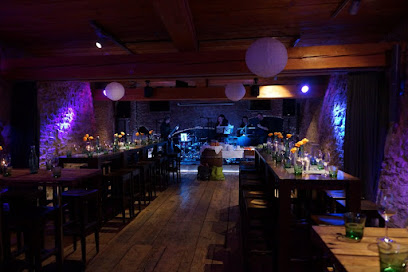
Eagle's Nest: A Mountaintop Retreat with a Dark Past
Discover the Eagle's Nest: A historic WWII site offering panoramic alpine views near Berchtesgaden, blending stunning scenery with a chilling glimpse into the past.
Perched atop the Kehlstein mountain near Berchtesgaden, the Eagle's Nest (Kehlsteinhaus) offers stunning panoramic views and a chilling glimpse into World War II history. Constructed between 1937 and 1938 as a 50th birthday gift for Adolf Hitler, this mountaintop structure was intended as a diplomatic venue and a symbol of Nazi power. Though Hitler himself only visited a handful of times, the Eagle's Nest hosted numerous Nazi officials and served as a backdrop for propaganda. Today, it operates as a restaurant and a historical site, drawing visitors from around the globe who come to witness the breathtaking alpine scenery and contemplate the weight of its past. The journey to the Eagle's Nest involves a scenic bus ride along a steep, winding road, followed by a unique elevator ascent through the mountain's core, making it an unforgettable and thought-provoking experience. Despite its dark history, the Eagle's Nest stands as a testament to engineering ingenuity and a reminder of the importance of remembering the past.
A brief summary to Eagles Nest Historical Tours
- Salzbergstraße 43, Berchtesgaden, 83471, DE
- +49865262172
- Visit website
Local tips
- Book your bus tickets online in advance, especially during peak season, to avoid long queues and ensure your preferred departure time.
- Arrive early in the morning to avoid crowds and secure a spot on the first buses up to the Eagle's Nest.
- Combine your visit with a trip to the Obersalzberg Documentation Center to gain a deeper understanding of the historical context.
- Wear comfortable shoes, as there is some walking involved, including a tunnel and elevator ride to reach the Eagle's Nest.
- Check the weather forecast before your visit and dress accordingly, as the mountaintop can be significantly cooler than the valley below.
Getting There
-
Public Transport
To reach the Eagle's Nest using public transport, begin at the Berchtesgaden train station. From there, take bus #838 towards Obersalzberg. The ride takes approximately 15 minutes. Alight at the 'Dokumentation Obersalzberg' stop. From the bus stop, walk towards the clearly marked Eagle's Nest bus departure point, identified by blue flags with 'Kehlsteinhaus' written on them. Purchase your tickets for the special bus service (line 849), which includes the elevator fare to the Eagle's Nest. This bus is the only way to access the Eagle's Nest, as private vehicles are prohibited on the Kehlstein Road. The roundtrip bus and elevator ticket costs approximately €31.90 for adults and €16.50 for children (ages 6-14). Children under 6 are free. The bus departs every 25 minutes from mid-May to late October. Upon arrival at the upper bus station, follow the signs to the tunnel entrance, which leads to the elevator that ascends directly into the Eagle's Nest.
-
Taxi/Ride-Share
For a more direct route to the Eagle's Nest departure point, take a taxi or ride-share from Berchtesgaden. Specify 'Salzbergstraße 45, 83471 Berchtesgaden' as your destination; this is the address for the Kehlstein bus departure point. The taxi ride from the Berchtesgaden train station typically costs around €12 and takes about 7 minutes, depending on traffic. Upon arrival at the bus departure point, purchase your tickets for the special bus service (line 849), which includes the elevator fare to the Eagle's Nest. This bus is the only way to access the Eagle's Nest, as private vehicles are prohibited on the Kehlstein Road. The roundtrip bus and elevator ticket costs approximately €31.90 for adults and €16.50 for children (ages 6-14). Children under 6 are free. The bus departs every 25 minutes from mid-May to late October. Upon arrival at the upper bus station, follow the signs to the tunnel entrance, which leads to the elevator that ascends directly into the Eagle's Nest.
-
Driving
If driving, navigate to 'Parkplatz Obersalzberg – Dokumentationszentrum' (Salzbergstraße, 83471 Berchtesgaden). Parking costs approximately €5 per day. From the parking area, walk towards the clearly marked Eagle's Nest bus departure point, identified by blue flags with 'Kehlsteinhaus' written on them. Purchase your tickets for the special bus service (line 849), which includes the elevator fare to the Eagle's Nest. This bus is the only way to access the Eagle's Nest, as private vehicles are prohibited on the Kehlstein Road. The roundtrip bus and elevator ticket costs approximately €31.90 for adults and €16.50 for children (ages 6-14). Children under 6 are free. The bus departs every 25 minutes from mid-May to late October. Upon arrival at the upper bus station, follow the signs to the tunnel entrance, which leads to the elevator that ascends directly into the Eagle's Nest.
Discover more about Eagles Nest Historical Tours
Iconic landmarks you can’t miss
Eagle Fountain
3.0 km
Discover the iconic Eagle Fountain in Berchtesgaden, a historical landmark on Maximilianstraße, embodying Bavarian charm and artistry amidst stunning Alpine scenery and rich history.
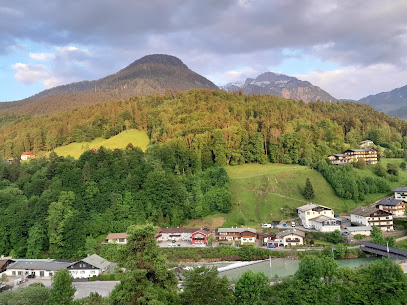
Berchtesgaden National Park Administration Building
3.0 km
Discover the heart of Germany's only alpine national park, where majestic mountains meet pristine lakes, offering unparalleled hiking and nature experiences in the Bavarian Alps.
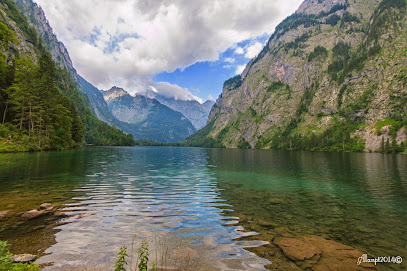
Sommerrodelbahn "Keltenblitz"
5.0 km
Experience high-speed thrills and stunning Alpine views on Austria's longest summer toboggan run near Salzburg.

Keltendorf
5.5 km
Explore Keltendorf in Bad Dürrnberg near Salzburg: An immersive open-air museum recreating a Celtic village, showcasing daily life, crafts, and the significance of salt mining.
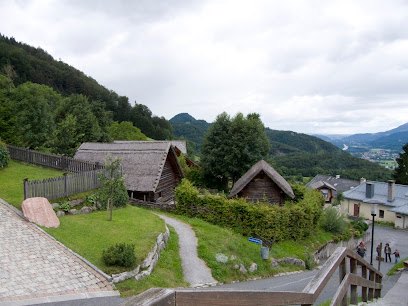
Salzwelten Salzburg
5.5 km
Explore the depths of history at Salzwelten Salzburg, a unique historical mine and museum showcasing the art of salt mining in stunning underground tunnels.

Stille Nacht Museum Hallein
6.8 km
Discover the history of 'Silent Night' at Franz Gruber's former home in Hallein, Austria. A musical pilgrimage for Christmas enthusiasts.
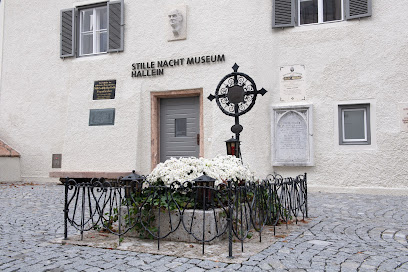
Historische Wehranlage für Feuerlöschzwecke
6.8 km
Explore Hallein's Historical Firefighting Fortress: A unique glimpse into the past, showcasing fire prevention ingenuity and community spirit in a charming Austrian town.
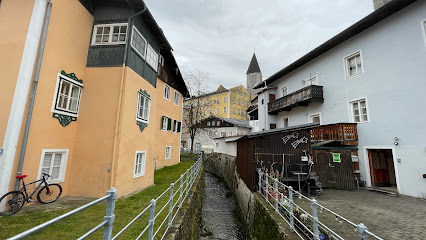
Keltenmuseum
7.1 km
Explore Celtic history and art at one of Europe's largest Celtic museums, featuring Iron Age artifacts and Salzburg's prehistory.
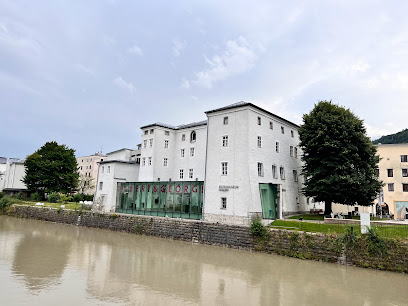
Echowand Königssee
7.2 km
Experience the natural acoustics of the Echowand on Königssee, a breathtaking alpine lake surrounded by towering mountains and pristine waters, creating an unforgettable echo.

Gollinger Wasserfall
7.9 km
Discover the breathtaking beauty of Gollinger Wasserfall, a must-see natural attraction in Golling an der Salzach, Austria, perfect for nature lovers and adventurers alike.
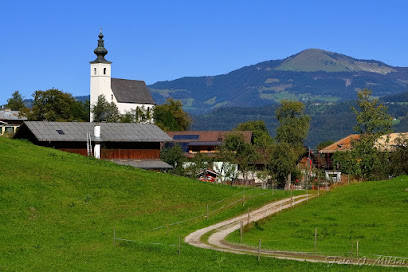
Kleiner Göll
7.9 km
Hike Kleiner Göll for a challenging alpine adventure near Golling, Austria, rewarded with breathtaking panoramic views of the Berchtesgaden Alps.

Salzburger Hochthron
10.1 km
Experience breathtaking views and thrilling adventures at the Salzburger Hochthron, a stunning mountain peak on the Austrian-German border.
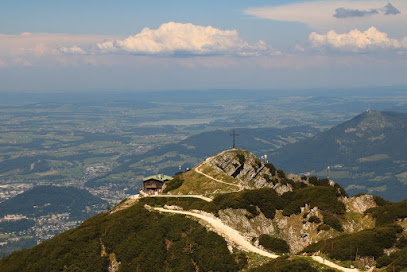
Museum Burg Golling
10.1 km
Explore millennia of history and culture within the walls of a medieval castle in the scenic Salzach Valley.
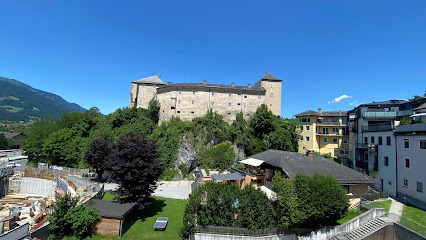
Jahreszeitenweg Golling
10.5 km
Discover Austria's beauty on Golling's Jahreszeitenweg: a family-friendly trail with interactive exhibits and stunning scenery.
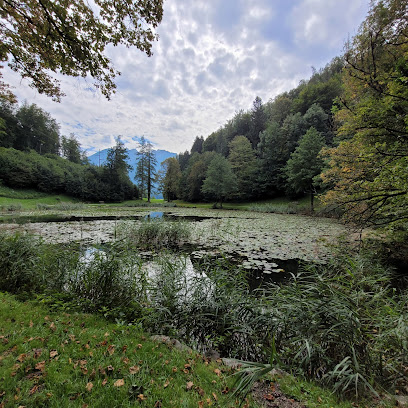
Burgstall Althaus
11.4 km
Explore the enchanting Burgstall Althaus, a historic castle ruin in Bischofswiesener Forst, surrounded by breathtaking Bavarian landscapes.

Unmissable attractions to see
Dokumentationszentrum Obersalzberg
0.2 km
Discover the profound history of the Nazi regime at the Dokumentationszentrum Obersalzberg, a must-visit museum in the breathtaking Bavarian Alps.

Berghof
0.4 km
Discover Berghof, a historical landmark in Berchtesgaden, Germany, where history meets breathtaking alpine beauty.
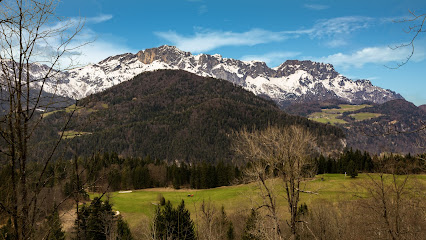
Bunkeranlage Obersalzberg
0.4 km
Discover the haunting history of World War II at Bunkeranlage Obersalzberg, a must-see historical landmark in the Bavarian Alps.
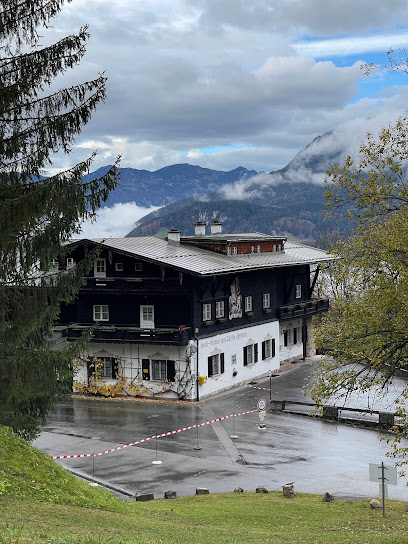
Adlergehege Obersalzberg
0.7 km
Experience the beauty of eagles and learn about wildlife conservation at Adlergehege Obersalzberg in Berchtesgaden, a stunning German zoo.

Obersalzberg
0.7 km
Discover the enchanting slopes of Obersalzberg, a top ski resort in Berchtesgaden, perfect for skiing, snowboarding, and breathtaking alpine views.
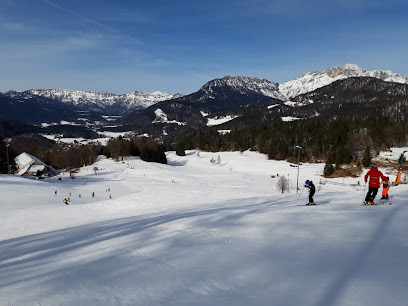
Teehaus am Mooslanerkopf
1.1 km
Discover tranquility at Teehaus am Mooslanerkopf in Berchtesgaden, where nature's beauty meets delightful teas and serene ambiance.

Obersalzbergbahn Bergstation
1.8 km
Experience breathtaking views in Berchtesgaden with the Obersalzbergbahn Bergstation, a gateway to the majestic Bavarian Alps and unforgettable outdoor adventures.
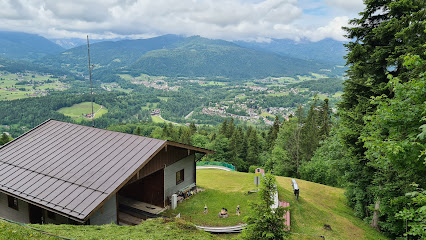
Fußweg zum Kehlsteinhaus
1.9 km
Explore the stunning hiking trail to Kehlsteinhaus, a blend of breathtaking scenery, rich history, and unforgettable views in Berchtesgadener Land.
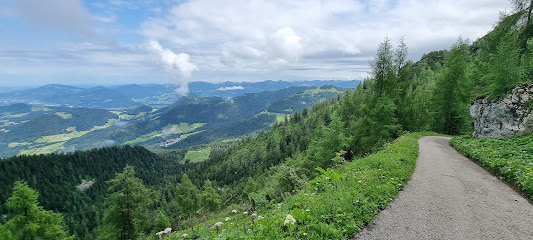
Salt Mine Berchtesgaden
1.9 km
Explore the mystical depths of Salt Mine Berchtesgaden, a unique attraction in the Bavarian Alps blending adventure, history, and stunning underground landscapes.

The Eagle's Nest
2.1 km
Discover The Eagle's Nest, a historic landmark in the Bavarian Alps with stunning views, rich history, and unforgettable alpine experiences.
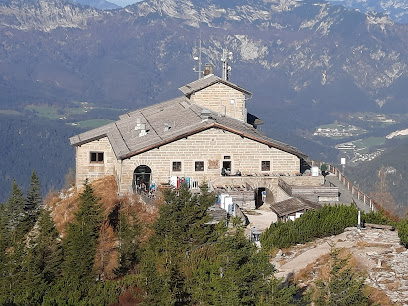
Watzmann Therme
2.3 km
Discover relaxation and rejuvenation at Watzmann Therme, the ultimate thermal spa in Berchtesgaden, surrounded by breathtaking alpine beauty.
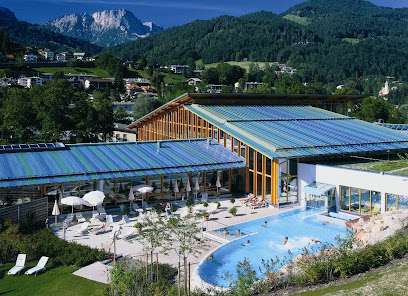
Museum Schloss Adelsheim
2.4 km
Explore the captivating history and art of Berchtesgaden at Museum Schloss Adelsheim, a stunning castle museum surrounded by breathtaking Alpine scenery.
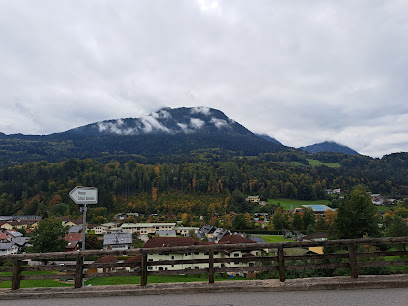
Kalter Keller
2.5 km
Explore Kalter Keller, a charming Bavarian attraction in Berchtesgaden, offering stunning views, delicious local cuisine, and a serene atmosphere.
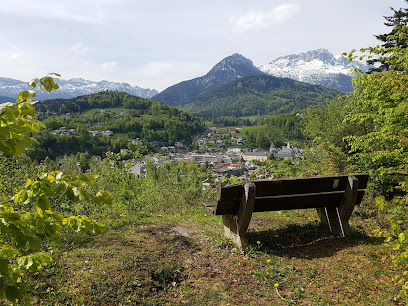
Berchtesgaden - Obersalzbergbahn GmbH
2.6 km
Experience the breathtaking beauty of the Bavarian Alps with the Obersalzbergbahn, a must-visit mountain cable car in Berchtesgaden.
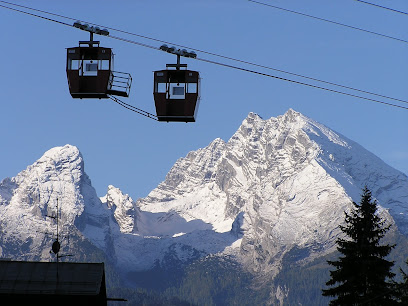
Obersalzbergbahn Talstation
2.6 km
Experience the breathtaking views and adventure at the Obersalzbergbahn Talstation, your gateway to the stunning Bavarian Alps.

Essential places to dine
Berggasthof Obersalzberg
0.0 km
Discover Berggasthof Obersalzberg: A delightful restaurant in Berchtesgaden offering traditional Bavarian cuisine with stunning mountain views.
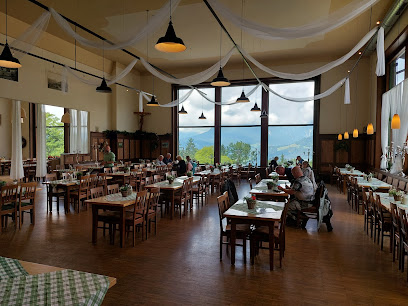
Restaurant Johann Grill
0.6 km
Experience exquisite Bavarian cuisine at Restaurant Johann Grill in Berchtesgaden, where every meal comes with breathtaking alpine views.
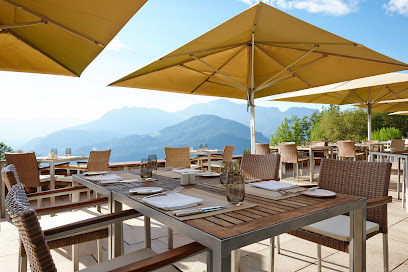
Gourmet Restaurant PUR
0.6 km
Indulge in an extraordinary fine dining experience at Gourmet Restaurant PUR in Berchtesgaden, where culinary artistry meets stunning alpine views.
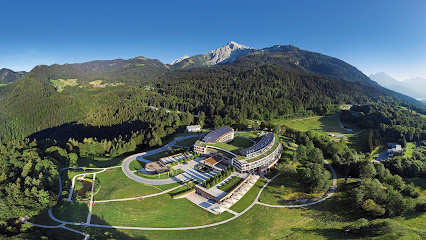
Kaminbar
0.6 km
Discover culinary excellence at Kaminbar in Berchtesgaden - where local flavors meet stunning alpine views.

Skytop
0.6 km
Experience fine dining with breathtaking views at Skytop in Berchtesgaden - where Bavarian flavors meet stunning alpine scenery.
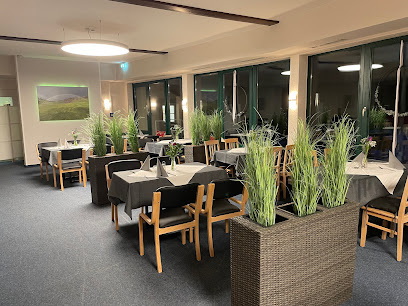
Holzkäfer
1.9 km
Discover authentic Bavarian cuisine at Holzkäfer, a charming mountain cabin in Berchtesgaden offering breathtaking views and hearty meals.
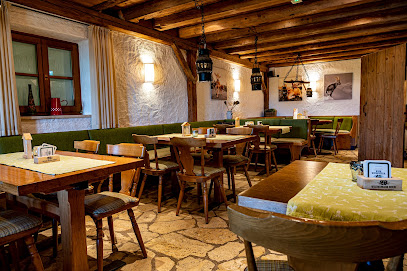
Gasthaus Sonneck
1.9 km
Experience authentic Bavarian cuisine at Gasthaus Sonneck in Berchtesgaden - where mountain views meet delightful dining.
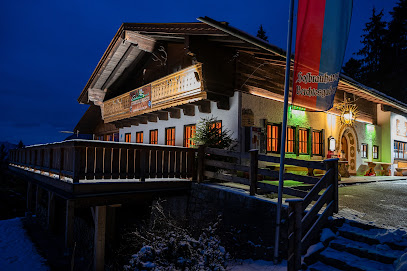
Restaurant Allweglehen
1.9 km
Experience authentic Bavarian flavors at Restaurant Allweglehen in Berchtesgaden – where every meal is a celebration of local cuisine.
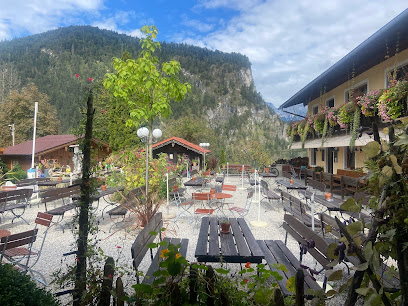
Gasthaus Laroswacht
2.3 km
Experience authentic Bavarian cuisine amidst breathtaking views at Gasthaus Laroswacht in Berchtesgaden.
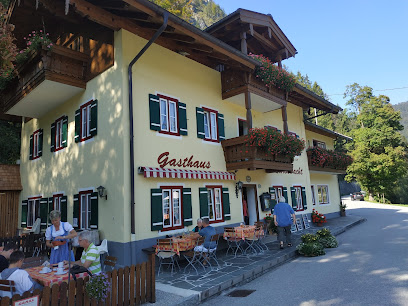
Wirtshaus zur Schießstätte Berchtesgaden
2.5 km
Experience authentic Bavarian cuisine at Wirtshaus zur Schießstätte Berchtesgaden amidst stunning alpine scenery.
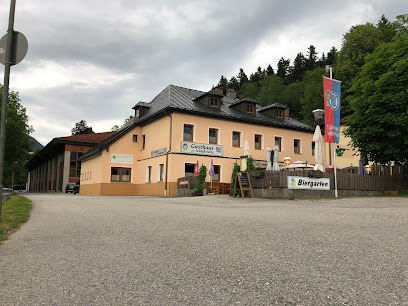
Bräustüberl
2.6 km
Savor authentic Bavarian flavors at Bräustüberl in Berchtesgaden – where tradition meets taste amidst stunning alpine views.
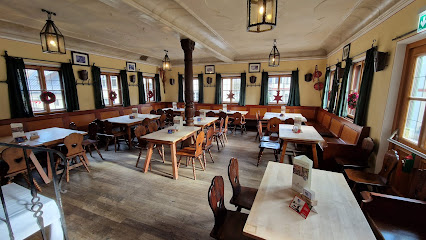
Biohotel Kurz
2.7 km
Experience eco-luxury at Biohotel Kurz in Berchtesgaden - where sustainable living meets fine dining.

Berchtesgadener Esszimmer
2.8 km
Experience exquisite local cuisine at Berchtesgadener Esszimmer amidst stunning Bavarian Alps scenery.
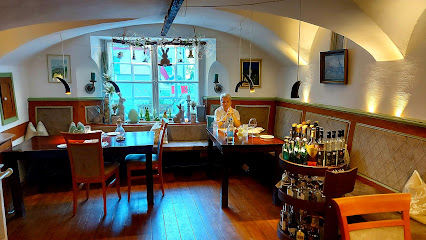
Sophie's Café
2.9 km
Experience authentic Bavarian cuisine at Sophie's Café in Berchtesgaden - where every dish tells a story!
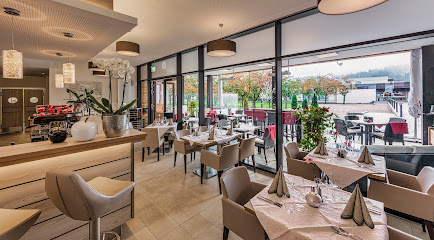
Gasthof Neuhaus
2.9 km
Discover authentic Bavarian cuisine at Gasthof Neuhaus in Berchtesgaden – where every dish tells a story amidst breathtaking alpine views.
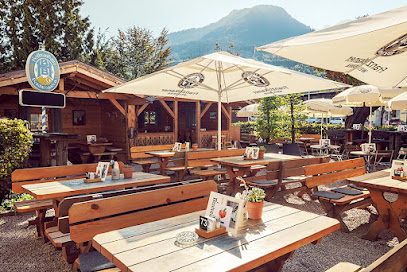
Markets, malls and hidden boutiques
Eagle’s Nest Souvenirs
0.2 km
Explore the enchanting Eagle’s Nest Souvenirs for unique gifts and keepsakes inspired by the stunning Bavarian Alps.

PENNY
2.6 km
Discover affordable shopping at PENNY in Berchtesgaden, your go-to discount supermarket for local groceries and essentials.
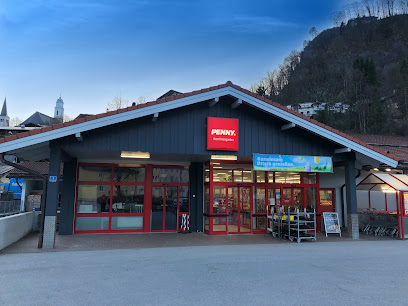
Teamwörk's Shop am Schlossplatz
2.8 km
Discover a treasure trove of souvenirs, local crafts, and unique gifts at Teamwörk's Shop am Schlossplatz in beautiful Berchtesgaden.
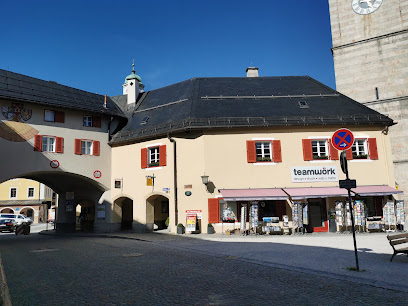
Grassl Genusstreffpunkt am Schlossplatz
2.9 km
Experience the rich flavors of Berchtesgaden at Grassl Genusstreffpunkt, your ultimate destination for exquisite wines and local charm.

Richie's Vintage & Secondhand Shop
2.9 km
Explore unique vintage clothing and sustainable fashion at Richie's Vintage & Secondhand Shop in Berchtesgaden, a treasure trove for style enthusiasts.
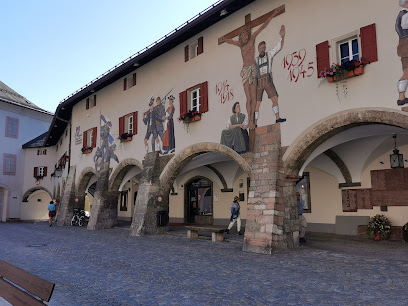
Lederhosen Aigner
2.9 km
Explore authentic Bavarian fashion at Lederhosen Aigner, where tradition meets craftsmanship in the heart of Berchtesgaden.
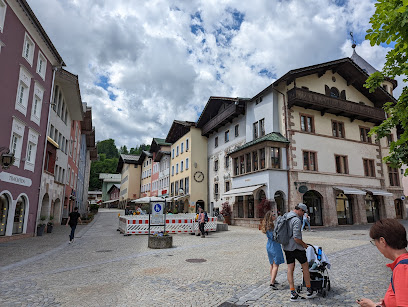
Berchtesgadener Handwerkskunst
2.9 km
Explore Berchtesgadener Handwerkskunst, a needlework haven in Berchtesgaden, and discover the beauty of traditional craftsmanship.
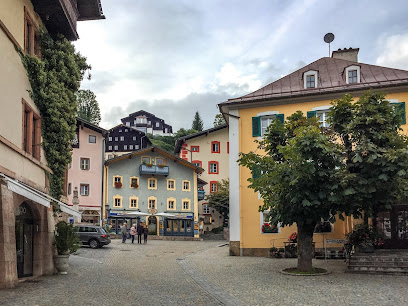
Enzianbrennerei Grassl / Distillery
2.9 km
Explore Enzianbrennerei Grassl in Berchtesgaden: A Distillery, Museum, and Deli Celebrating Bavarian Spirits and Heritage.
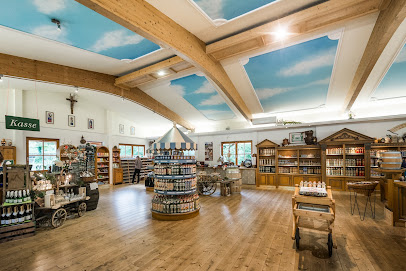
Holzschnitzerei Huber
2.9 km
Explore the enchanting world of wood carving at Holzschnitzerei Huber, the premier destination for handcrafted Bavarian artistry in Berchtesgaden.

Müller
3.0 km
Explore Müller in Berchtesgaden for a diverse range of products, from health essentials to beautiful souvenirs, all in one convenient location.
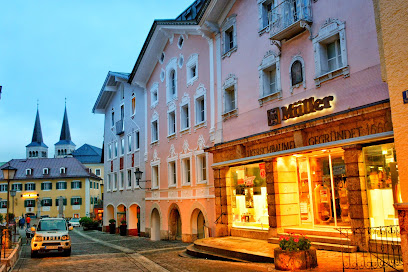
EURONICS Denk
3.0 km
Explore EURONICS Denk in Berchtesgaden for all your electronic needs, from household appliances to cutting-edge gadgets in a stunning alpine backdrop.
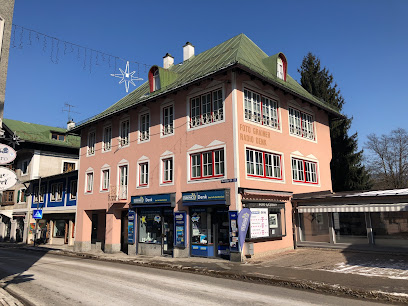
Franz Stangassinger
3.0 km
Discover authentic Bavarian leather craftsmanship at Franz Stangassinger in Berchtesgaden, offering exquisite lederhosen and unique accessories.
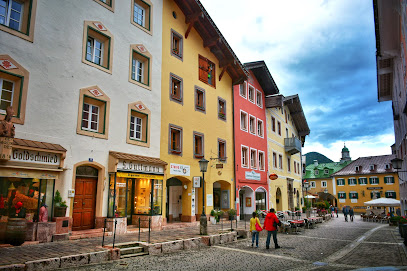
Bijou Brigitte modische Accessoires AG
3.0 km
Discover Bijou Brigitte in Berchtesgaden - your go-to destination for fashionable accessories and unique styles that enhance your travel experience.

Goettgen, Schmuck • Uhren • Trauringe
3.0 km
Explore Goettgen Jewelry & Gift Shop in Berchtesgaden for exquisite handmade jewelry, wedding rings, and unique gifts reflecting local craftsmanship.
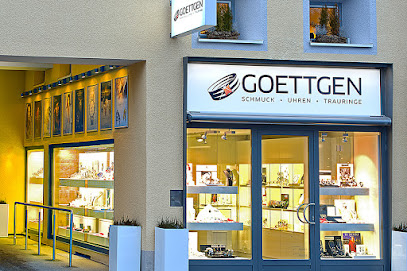
Ankleidezimmer Berchtesgaden
3.0 km
Explore Ankleidezimmer Berchtesgaden for unique vintage clothing and sustainable fashion in the stunning Bavarian Alps.

Essential bars & hidden hideouts
Charivari Berchtesgaden
2.8 km
Experience the heart of Bavarian hospitality at Charivari Berchtesgaden, where delectable dishes meet a vibrant atmosphere in the stunning Alps.

Ratsstubn
2.9 km
Discover the authentic Bavarian experience at Ratsstubn, a cozy pub in Berchtesgaden with a delightful beer garden.
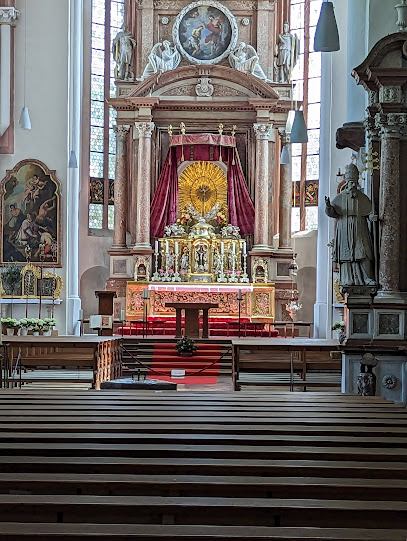
Soundcafe
3.0 km
Discover the vibrant atmosphere of Soundcafe, a perfect blend of bar and coffee shop nestled in picturesque Berchtesgaden, Germany.
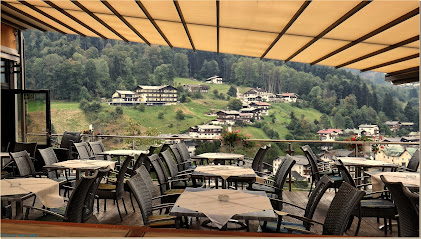
KS Alps Bowling GmbH
3.1 km
Enjoy a unique blend of bowling and dining at KS Alps Bowling GmbH in Berchtesgaden, where fun meets flavor in the heart of the Bavarian Alps.
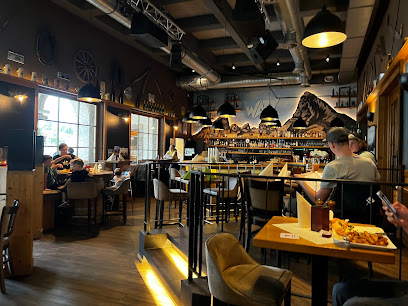
Kuckucksnest Berchtesgaden
3.2 km
Experience Bavarian hospitality at Kuckucksnest Berchtesgaden, a cozy bar with breathtaking mountain views and a selection of local drinks.

Zum Kleinen Kuckuck
3.3 km
Discover Bavarian charm at Zum Kleinen Kuckuck, a top-rated gastropub in Berchtesgaden, offering delicious local cuisine and a cozy atmosphere.
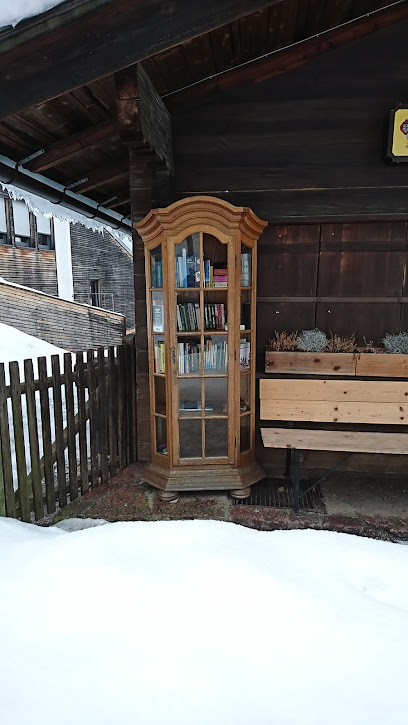
Pension FeWo Bar Gästezimmer Etzerschlössl
3.4 km
Discover the tranquility of Bavarian hospitality at Pension FeWo Bar Gästezimmer Etzerschlössl, your perfect retreat in Berchtesgaden's stunning landscapes.
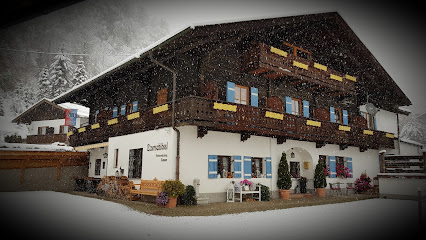
Kulturhof Gasthaus & Biergarten & Bar
3.9 km
Experience authentic Bavarian cuisine and vibrant beer garden vibes at Kulturhof Gasthaus & Biergarten, a true gem in Bischofswiesen.
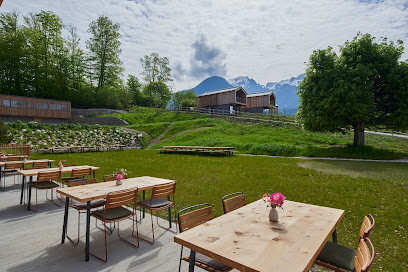
Vini Van - mobiler Bar
4.7 km
Discover Vini Van, a unique mobile bar in Schönau am Königssee offering a delightful selection of drinks amidst stunning alpine views.

Wieninger Bier Biergarten
6.0 km
Discover the authentic Bavarian experience at Wieninger Bier Biergarten, where local beer and delicious food meet stunning alpine views.

Biergarten am Königssee
6.1 km
Experience the charm of Bavaria at Biergarten am Königssee, where refreshing brews and delicious cuisine meet stunning alpine views.
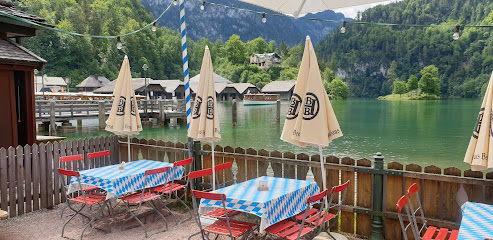
Sportbar
6.9 km
Experience the vibrant atmosphere of Sportbar in Hallein, where sports, drinks, and great company come together.

Kabinett
7.0 km
Discover the cozy charm of Kabinett, a delightful bar and café in Hallein, where local culture meets a relaxed atmosphere.
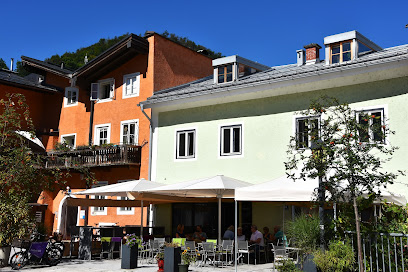
Einkehr mit Getränke
7.0 km
Experience the perfect blend of local charm and breathtaking views at Einkehr mit Getränke in Schönau am Königssee, Germany.
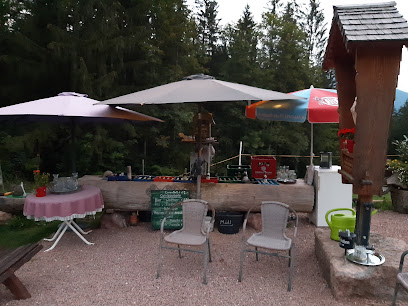
Freysitz
7.1 km
Experience Hallein's vibrant nightlife at Freysitz, a cozy bar serving a variety of local drinks in a welcoming atmosphere.
